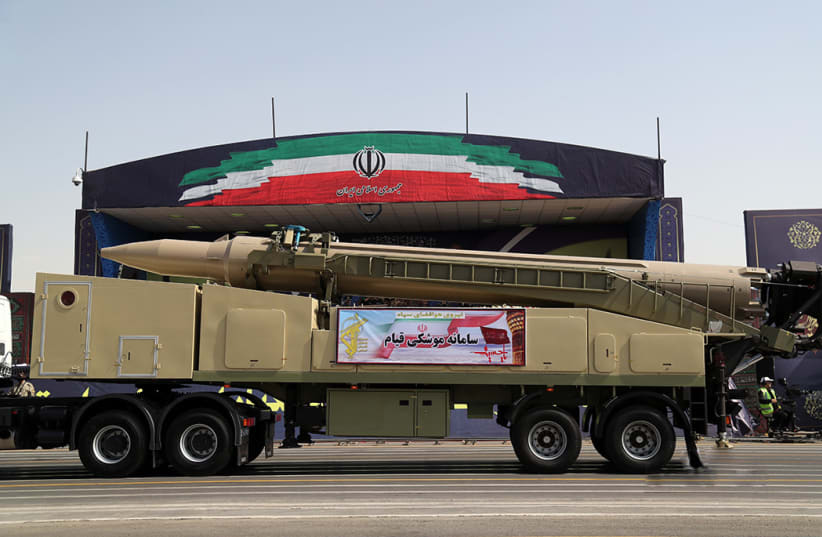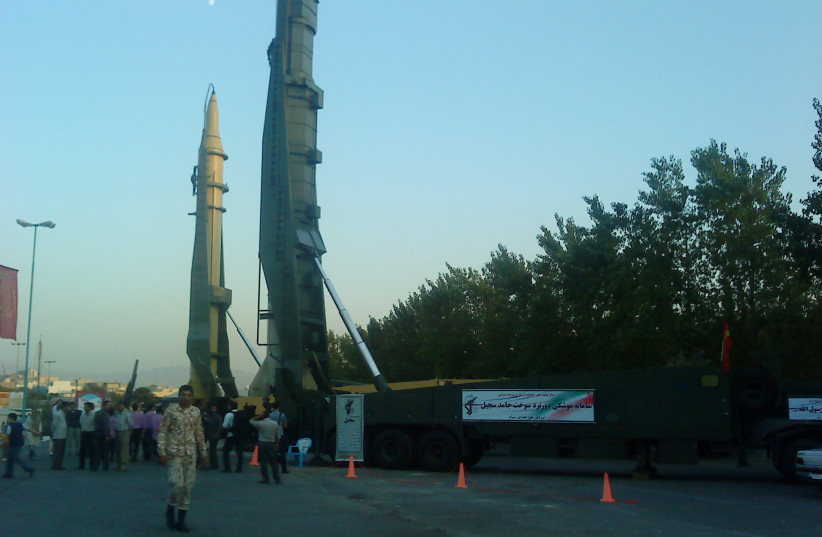Iran uses a valley in Kermanshah, Iran to base its Qiam-1 ballistic missiles, according to a new report from the Alma Research and Education Center.
“Not only do we have positive identification of the Qiam-1 ballistic missile arsenal in Kermanshah, Iran but you can even look directly into the missile base from an overlooking observation point,” the Center said last week.
The report shows Qiam-1 ballistic missiles based at an area around 150km. from the border with Iraq.
The missiles are allegedly kept in dozens of bunkers in three underground sites. One of them is in Konesht Canyon. There are “dozens of missile bunkers” dug into this canyon, the research center says.
A video online produced by Alma shows evidence of 61 missile bunkers in the canyon. Footage also shows what a bunker for a Qiam missile might look like.
They also say they have identified 80 other bunkers at a site called Panj Pelleh. These could house Qiam or Fatteh missiles.Not only do we have positive identification of the Qiam-1 ballistic missile arsenal in Kermanshah, Iranbut you can even look directly into the missile base from an overlooking observation point. #IRGCterrorists pic.twitter.com/8KI0hp8KXg
— Israel-Alma (@Israel_Alma_org) June 28, 2023
The canyon site has anti-aircraft weapons as well. The research center shows the location of the sites and the general context of the area. It also shows that there are surface-to-air missile sites at the Kermanshah air base.
Alma describes itself as “an education and research center, dedicated to researching the security challenges on Israel’s northern borders and educating opinion-makers from research centers, academia, and others on the multi-dimensional complexities in the Middle East.”
Ballistic rocket launch site referenced by National Council of Resistance
The National Council of Resistance of Iran also mentioned this site in March 2021.
They held a press conference at the time and mentioned two “IRGC ballistic missile sites in Western Iran that have been used for attacks against neighboring countries.”
At that event they claimed that this area was used to launch the missile attacks targeting US forces at Ain al-Assad in January 2020. “The regime never stated exactly from where the missile strikes were launched,” their report said.
According to the Center for Strategic and International Studies, the Qiam-1 “is a liquid fueled, short-range ballistic missile (SRBM) developed and deployed by Iran. The missile is an indigenous variant of the Shahab-2 SRBM. Unlike Iran’s other Scud-variants, it does not have external tail fins, and has a separating warhead. Iran has employed the Qiam-1 in combat operations on multiple occasions since 2017.”

